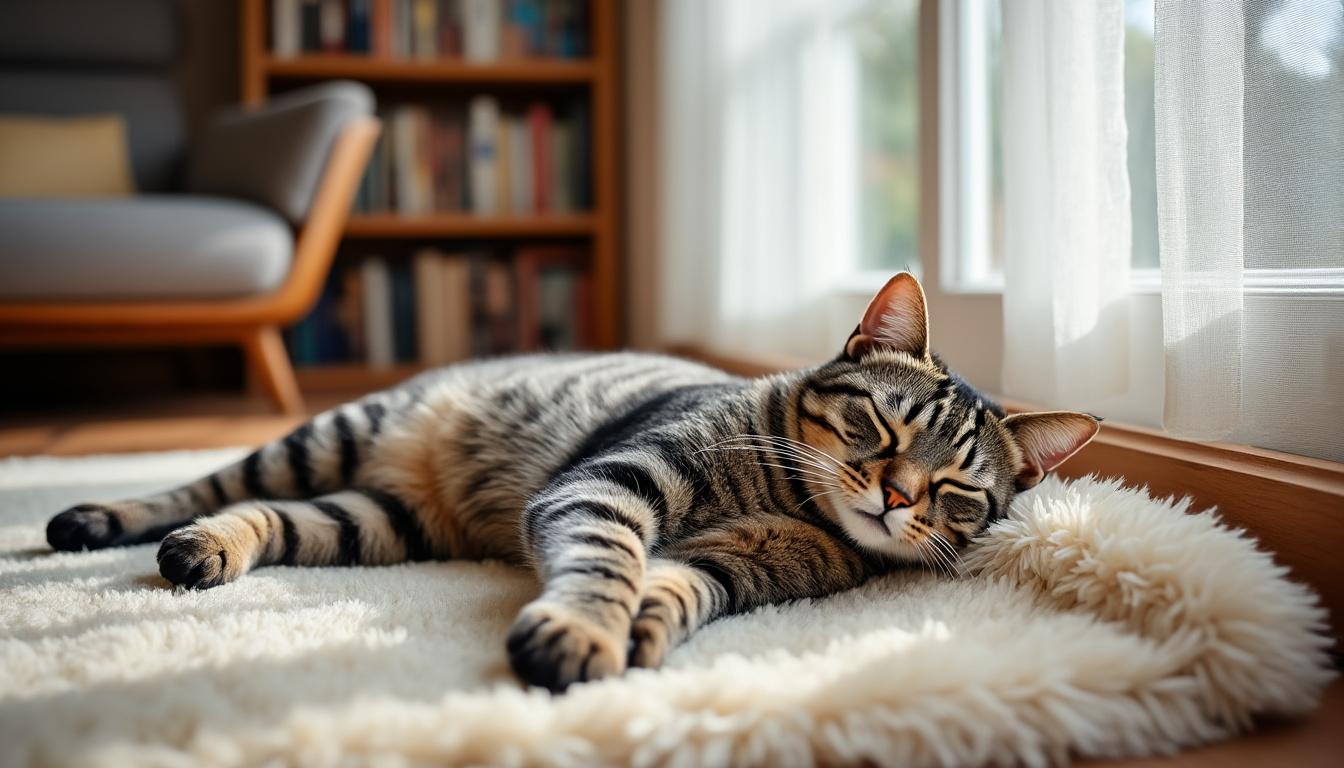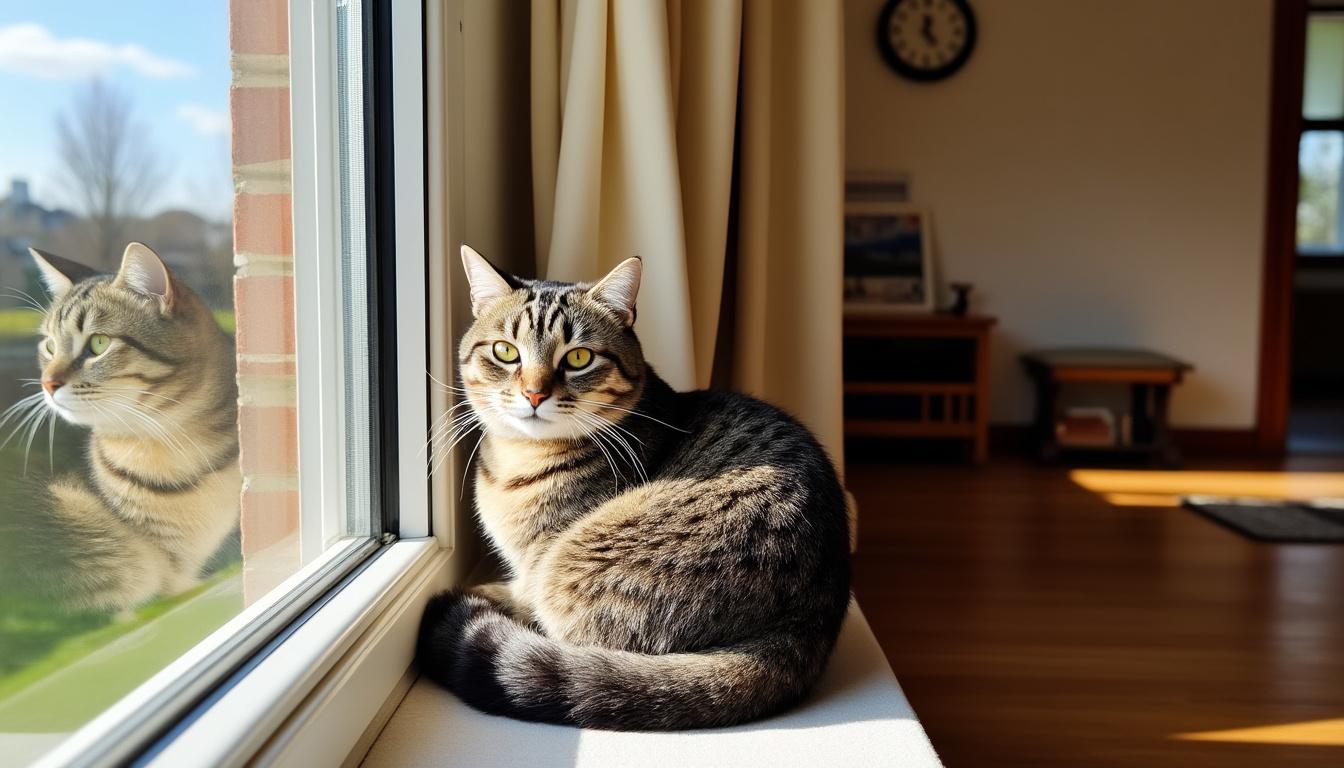Every pet owner knows that cats come with their own unique personalities. Some are bold and curious, while others tend to be shy and anxious. Feline anxiety isn’t just a mild inconvenience; it can significantly impact a cat’s behavior and overall health. Understanding how to calm an anxious cat is crucial for creating a peaceful environment that fosters their well-being. In this article, we’ll explore practical tips, products, and methods to help ease your cat’s anxiety, allowing them to thrive in a nurturing and calm atmosphere.
Brief
- 🗝️ Cats thrive on control; giving them choices helps ease anxiety.
- 🔄 Gradual introduction of new things can prevent overwhelming your fur friend.
- 🏡 Safe spaces such as cozy hides can significantly reduce stress levels.
- 🐾 Use calming products like Feliway and ThunderShirt to provide comfort.
- 🕰️ Routine is key; maintaining a consistent schedule helps create predictability.
Understanding Feline Anxiety in Cats
Just like us, cats can experience anxiety, and it manifests in various ways. From excessive grooming and aggression to simply hiding away, knowing how to recognize the signs is the first step in addressing your cat’s anxiety. Factors like past experiences, genetics, and environment contribute to a cat’s anxious behavior.
Here are some common signs of anxiety in cats:
- 😿 Hiding or seeking secluded spaces
- ⚡ Sudden aggression towards humans or other pets
- 🍽️ Change in eating habits, such as overeating or refusing food
- 🧼 Excessive grooming, which can lead to skin issues
- 💩 Litter box problems, like avoiding it altogether
It’s important to understand that anxiety isn’t a reflection of a cat’s temperament but often a result of their environment or experiences. For instance, a cat raised in a loud household or one that has undergone frequent changes may exhibit anxious behaviors. Identifying triggers and understanding behavior can be instrumental in devising a strategy to calm your anxious feline friend.

Creating a Calming Environment
Environment plays a significant role in a cat’s anxiety levels. A chaotic or disorganized space can exacerbate their nerves. Thus, creating a calming environment is a priority. Here are some ways to enhance your cat’s surroundings:
- 🏠 Safe Spaces: Ensure your home has several hiding spots where your cat can retreat. This could be under the bed, behind furniture, or in cat trees with enclosed spaces.
- 🎶 Soft Background Noise: Play soothing music or sounds specifically designed for cats to help mask sudden noises like thunder or fireworks.
- 🌱 Natural Elements: Incorporate plants that are safe for cats, creating a calming and enriching space for your furry friend.
- 🧸 Interactive Toys: Providing engaging toys can help alleviate stress by redirecting nervous energy into play and exploration.
When it comes to creating the ultimate cat-friendly home, investing in some quality cat trees or climbing shelves can do wonders for your anxious cat. These structures not only provide an escape but also stimulate their natural curiosity.
The Power of Routine
Stability is a key component in reducing feline anxiety. Cats are creatures of habit, and having a predictable routine can significantly reduce their stress levels. Here’s how to establish and maintain a comforting routine:
- 🕰️ Feeding Times: Try to feed your cat at the same time every day. This not only makes them feel secure but also ensures they have a healthy diet.
- 🌅 Consistent Playtime: Set aside time for play each day. Regular interaction can help build confidence and establish a bond between you and your kitty.
- 🛏️ Rest Areas: Create designated resting spots that are always available for your cat to retreat to when feeling anxious.
For busy pet parents, using an automatic pet feeder can simplify the feeding schedule, ensuring your cat’s meals happen consistently while reducing the hassle of feeding time.

Gradual Introductions
Changes, whether they’re moving houses, introducing new pets, or welcoming a new family member, can trigger anxiety in cats. To help your cat cope with these changes, introduce new elements slowly. Consider the following strategies:
- 🔔 New Pets: When bringing a new pet into the home, allow each animal to adjust to the other’s scent before face-to-face meetings.
- 👶 New Baby: Prepare your cat months in advance by introducing them to baby-related items in a calm manner.
- 🍽️ New Feeding or Litter Box: Transition to new feeding or litter areas gradually, maintaining the old setup until your cat is comfortable.
By allowing your cat to explore new changes at their own pace, you can significantly reduce their anxiety and foster a sense of security.
Calming Products You Can Try
There are several products in the market specifically designed to help calm anxious pets. Implementing these can make a noticeable difference in your cat’s temperament. Here’s a rundown of some available options:
| Product | Type | Usage |
|---|---|---|
| Feliway | Pheromone Diffuser | Promotes a sense of safety and comfort by mimicking natural cat pheromones. |
| ThunderShirt | Pressure Wrap | Offers gentle pressure to help calm anxious cats during stressful situations. |
| Bach Rescue Remedy | Natural Formula | Homeopathic solution for easing feelings of anxiety in pets. |
| Pet Remedy | Calming Spray | Natural mix of essential oils to help calm anxious pets. |
| Purina Calm Care | Dietary Supplement | Helps reduce stress and anxiety through nutrient-enhanced treats. |
Positive Reinforcement Techniques
When trying to desensitize an anxious cat or instill more confidence, positive reinforcement is key. Rewarding your cat for brave behavior helps them associate new experiences with positive outcomes. Here’s a simple guide:
- 🍖 Treats: Always have their favorite treats on standby for when they exhibit brave behavior.
- 🎊 Praise: Verbal praise goes a long way in reassuring your cat. Use a soft voice to celebrate their successes.
- 😻 Clicker Training: Clicker training can help reinforce desired behaviors and grow your cat’s confidence in various situations.
What are the signs of an anxious cat?
Common signs include hiding, aggression, changes in eating habits, excessive grooming, and litter box avoidance.
How long does it take to calm an anxious cat?
The time it takes varies by individual cat. Consistency within care routines and the gradual introduction of new stimuli can help speed up the process.
Can calming products be harmful to cats?
Generally, most calming products like Feliway and ThunderShirt are safe. However, consult your vet to ensure the right product for your cat.
How do I help my anxious cat with strangers?
Inform visitors about your cat’s temperament and keep safe areas accessible. Allow your cat to approach on their terms.
Is overgrooming always a sign of anxiety?
Not always, but it can indicate stress or anxiety. Monitor your cat’s behavior and consult with a vet if it persists.

